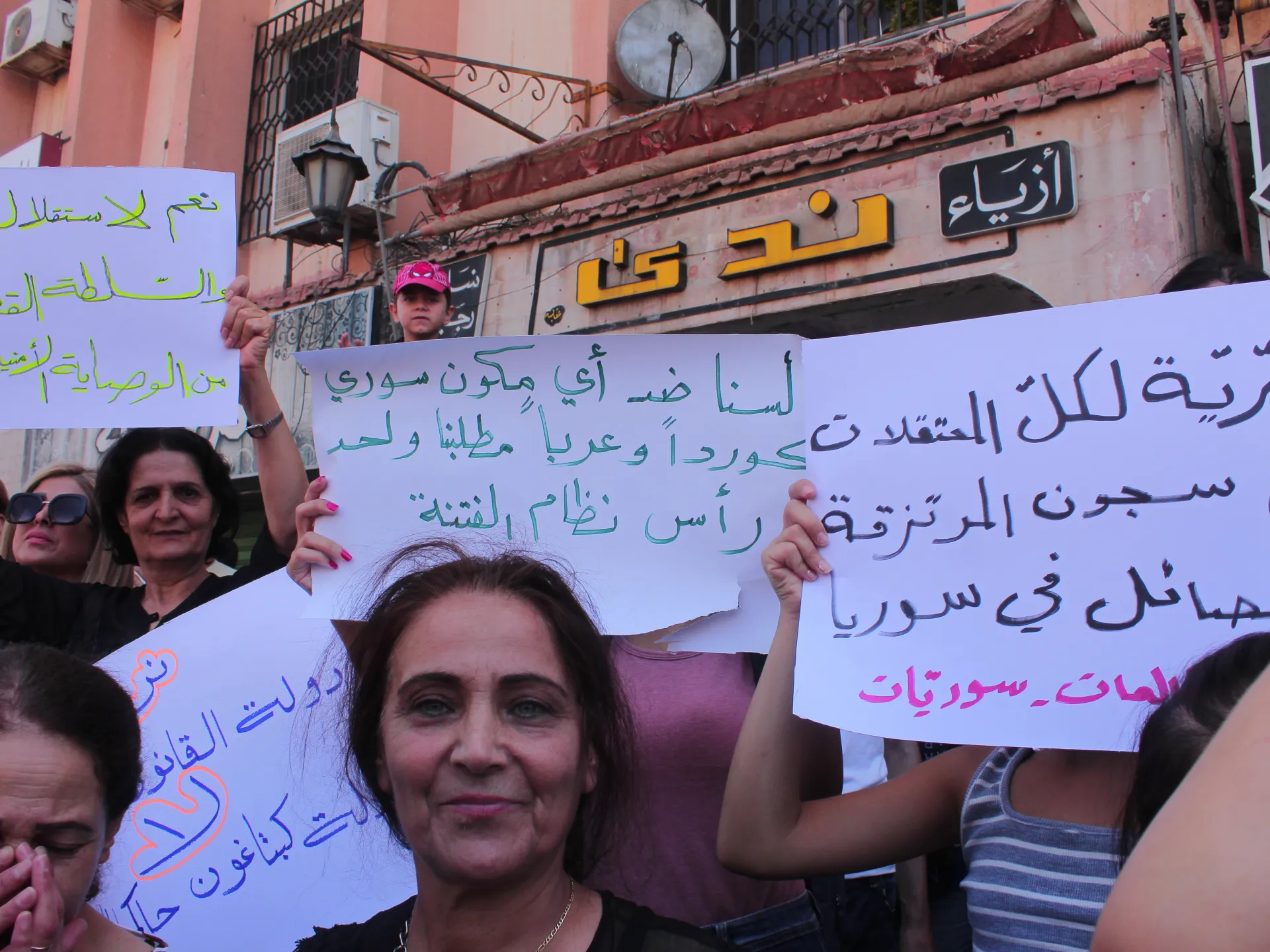Protests across Syria have entered their fourth week and have witnessed increasing spread across the country. The protests took place in areas controlled by the regime, most notably as-Suwayda, Deraa and other regions, as well as in areas controlled by the Syrian National Army and Hay’at Tahrir al-Sham and areas controlled by the Syrian Democratic Forces.
Initially sparked by policy decisions, such as the government’s decision to lift fuel subsidies amidst poor economic conditions, protests took place in concurrence with closures, road blockages and strikes.
The protests later escalated and witnessed the reappearance of Arab Spring slogans and chants, Free Syrian Army flags and calls for the overthrow of the regime. Eventually, protests escalated beyond mere policy reform demands. Significantly, as-Suwayda protesters smashed a Hafez al-Assad statue earlier this week, as security forces have largely chosen to refrain from intervening.
The Role of Syrian Women
Women are playing a leading role in the demonstrations, raising the bar of political chants, calling for the release of detainees, dignity, freedom and the overthrow of the regime. Many are inviting each other to join the demonstrations.
They have largely positioned themselves on the front lines of the protests, emphasizing the importance of the current wave of dissent.
The role of women across the Arab Spring and 2019 revolutions was central, especially in contexts such as Lebanon, Tunisia and Sudan where women led movements on the street and positioned themselves at the forefront during demonstrations.
Undermining the Regime’s Geopolitical Strategies Moves
The recent developments run counter to the current regional trend in normalizing ties with the Syrian regime and the return of Syria to the Arab League. More significantly, they run counter to a seemingly stable-yet-authoritarian political scene, and an attempt from the regime to escape international isolation.
Accordingly, the demonstrations signal lingering public unrest across Syrian territories vis-à-vis the current state of affairs, and raise questions regarding the durability of the current regime and its main figures.
They also raise questions around the role that Syria has to play amidst regional agreements such as the Saudi-Iranian deal and the increasing trend of Arab governments normalization of ties with Israel, as well as more global conflicts such as the Russian-Ukranian war, given the Russian army’s crucial support to the Assad regime during the conflict.
It’s safe to say that international actors who were considering normalizing ties and restoring relations with the regime are now thinking twice.
A Widening Scale
Friday, September 1 witnessed the biggest demonstration so far amidst the current wave, reaching up to 2,000 in as-Suwayda’s Al-Karam square according to an Arab News source. Demonstrations in government-controlled areas have been rare, even more so in as-Suwayda as the province remained largely neutral during the conflict.
The recent developments in Syria mean that unrest is far from quelled and that stability is far from achieved. On the contrary, the renewal and persistence of anti-regime protest movements signal a radical rejection of the regime’s presence and a refusal of acquiescence in the face of deteriorating conditions.


